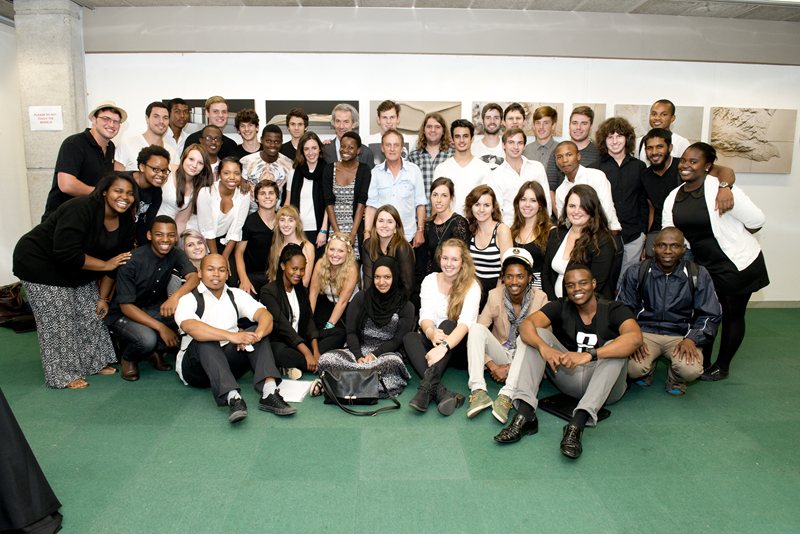
THE UNSPEAKABLE ARCHITECTURE
Extension to the Nelson Mandela Metropolitan Art Museum, Port Elizabeth
Studio Staff: Ernst Struwig, Jean-Pierre Basson
Assistant: Theodor de Goede
Historically, this area is one of the more important sections of Nelson Mandela Bay because it is where the Metropolitan Area had its beginnings on the coast. It is therefore very important for urban conservation and consequently for tourism. The entire image of the Nelson Mandela Bay Metropolitan is contained in this central area; it is the “face” that Nelson Mandela Bay presents to the rest of the world and which therefore gives it its unique identity, distinguishing it from any other city.
Western Road serves as a vital link between the Donkin Reserve where Route 67 culminates at the Giant Flag and the St George’s Park area of Central. The Bird Street precinct, as cultural, academic and legal node within the Central Hill area is also affected by what happens in Western Road. The precinct is also of important Built Heritage value and this needs protection and promotion in terms of the South African Heritage Resources Act.
The task identified is to therefore develop a comprehensive spatial framework and urban design master plan for the environmental upgrading of Western Road between the Campanile, Belmont Terrace and St George’s Park. Opportunities for strengthening the cultural elements should be identified here, in the heart of the Metropolitan Area, possibly over a series of phases of development. These should be informed by the conceptual framework of Route 67 and the investigations done as part of the Belmont Terrace precinct.
Part of this project is to consider ideas for the redevelopment and extension of the Nelson Mandela Metropolitan Art Museum complex in St George’s Park and around the cenotaph.
The Strength of Silence
Extension to the Nelson Mandela Metropolitan Art Museum (NMMAM) in Port Elizabeth.
The Resistance of Values
South Africa and Venice have much in common. Although far from the equator, between these two realities, there flows an invisible energy. Something underground, and because of this it is even more powerful, uncontrollable. We are talking about an energy that belongs to the spirit of men like the soul of things: the ’resistance’. That common substratum, which binds in the same way human virtues and natural powers. It is the same for us and for things. In fact, in the ‘resistance’ coagulates the principle of conservation of life, of survival. For this reason, its intimate and profound core is indestructible, inexhaustible. Also because it does not depend completely on us. It is a metaphysical-universal condition which belongs to the origin. Its indomitable powers nest inwards, are wedged in matter, and are molded in shapes. Mandela-Venice, have had, we can say without exaggerating, something in common.
In South Africa the ‘resistance’ opposed apartheid. In Venice, the resistance opposed ‘segregation’ from its own form. In both cases, the process of opposition has asserted itself thanks to a stubborn will, to an inflexible obstinacy. The purpose? To save or safeguard the identity. Of whom? Of man, of the city. Yet one is reciprocal to the other. In fact, the fundamental theme of ‘resistance’ is superimposed by that of ‘coexistence’. Or rather, the forms of ‘coexistence’, human and urban. The presupposition of each civilization in its endless variations: political, civil, religious, cultural, economic, linguistic.
The resistance of names: Architecture, Nelson Mandela, Port Elizabeth. An inalienable triad. We are in a faculty of architecture; in Port Elizabeth, faced with the unique name “Nelson Mandela” for two distinct locations: University and Museum (the theme of the workshop). What should be highlighted in this sequence relates to the permanence of the opposite powers which we find in the names and, consequently, their underlying meaning. The double root of ‘architecture’ converges: the uncontrollable (arché) and the controllable (techné). A bond completely ignored by our technical-scientific culture. In fact, the controllable (techné) has ‘segregated’ the uncontrollable (arché). This is an epistemic paradox and, therefore, aesthetic; the profound and ignored cause of the insignificance of the project, of the formal banality.
The figure of Nelson Mandela converges: the universal ideal and the spatial restriction. The value of freedom and the cell on Robben Island. Twenty-seven years of physical ‘segregation’ and spatial isolation have allowed the translation of the universal ideal into a real condition, possible and perfectible. The name of Port Elizabeth converges: the pain of the individual and the suffering of the race. The irredeemable pain of a stranger, Sir Rufane Donkin1 rises as a monument; pierces through the tragic pain of people; that pain which absorbs every colour to become the name of a community, the effigy of a city.
To read the full article written by Renato Rizzi click here. To view the presentation click here.
back to IAW 2014